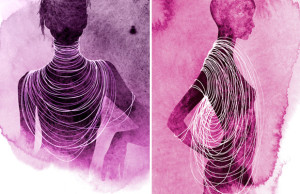Jewish Genetic Links to East Asia and South Asia

Written by Joseph Dunsay. After earning a Masters of Science in Ecology and Evolution, Joseph Dunsay became a science writer for international audiences. For more Jewrotica writing by Joseph, check out The Disadvantages of Polygyny Make Couples Choose Monogamy, The Scientific Opinion Regarding Gender Specific Brains is Mixed, The Roman Empire Left an Imprint on Jewish Genes, Teledildonics May Help Jewish Husbands Travel, Madness and Humanity’s Gene Pool, The Significance of Secondary Sex Characteristics, and Changing Views Towards Anal Sex.

China is reestablishing the famous Silk Road in the form of a railroad to facilitate trade with Asian, European, and African countries. The railroad currently stretches 5,900 miles from Zhejiang province in China to the city of Tehran in Iran. The line will eventually reach into Europe. The original Silk Road dates back to 220 BCE and connected China with Persia, India, Greece, and Rome.
Goods, such as the 8th Century Hebrew manuscripts unearthed in China, weren’t the only things that traveled along the ancient Silk Road; DNA also made the journey, and some of that DNA ended up in the genomes of Ashkenazi Jews. One study found DNA from the Far East, most likely from China, in the mitochondria of a few Ashkenazi Jews. The study results suggest that within the past 1,400 at least one Chinese woman gave birth to Jewish children and that her descendants spent centuries as Jews without being aware of their Far Eastern ancestor.
Because a person’s mitochondria come only from his mother, the DNA within the mitochondria does not mix with the father’s DNA during conception. Save for a few changes due to mutation, people from the same matrilineal line will have the same mitochondrial DNA. This makes it relatively easy for researchers to discover genetic ties between people living in distant regions who have no family stories about connections to each other’s lands. Among the approximately 23,000 East Asian and Jewish subjects in the above mentioned study, there were a handful of Ashkenazi Jews with East Asian maternal ancestors.
A more recent study looked at gentile and Jewish genetic links in China’s neighbor, India. Researchers analyzed genetic data to ascertain the genetic origins of Indian Jewish populations. They found that the Jews of Kochi, the Baghdadi Jews in Kolkata, and the Bene Israel Jews in Mumbai had traces of Middle Eastern ancestry in their DNA. Most of the DNA in Indian Jewish populations came from local gentiles, indicating that there was substantial mixing between Jews and gentiles in India over the centuries.
The Jewish community in Kochi, India goes back 2,000 years. Tradition states that they migrated to India when the Romans destroyed the second temple in 70 CE. Sephardic Jews joined the community when they were expelled from Spain and Portugal 500 years ago. Except for a period of Portuguese rule, the descendants of both waves of refugees enjoyed religious tolerance for millennia in Kochi.
The Baghdadi Jews of Kolkata also lived safely in India for numerous generations. Most of them have roots in Iraq, but some families come from Syria, Afghanistan, Russia, and Poland. The dwindling community still has friendly relationships with Kolkata’s gentiles. Muslim caretakers maintain two of the city’s synagogues.
Historians have multiple theories about how the Bene Israel came to India. After arriving in India, they almost completely assimilated, although they continued to keep kosher, rest on Shabbat, and circumcise their sons. According to Bene Israel tradition, a visiting Jew recognized their Jewish identity 600 to 1,000 years ago and reintroduced them to elements of Judaism. A century and a half ago, many Bene Israel moved from rural villages to the city of Mumbai. There, they met Kochi Jews who brought them closer to Jewish communities and traditions from the wider world. The Bene Israel had peaceful relations with their Muslim and Hindu neighbors on the Konkan coast.
The genetic similarities between India’s Jewish and gentile population is a testament to the warm intercommunity relations throughout most of Jewish history there. Whether through conversions, intermarriage, or a combination of the two, many local Indians joined the global Jewish family. The fact that India’s Jewish communities kept their Jewish identity even after embracing their new relatives shows that modern Jews with one or more non-Jewish grandparents can still pass on a commitment to Judaism to the next generation.













0 comments